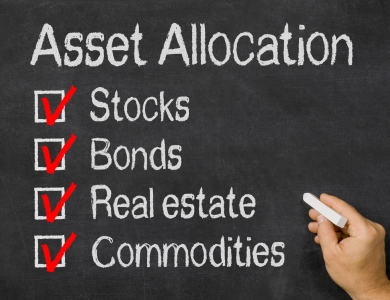In a company, there are several departments, each with its own function. There’s the Sales Department, in charge of, well, selling. There’s the Marketing Department, tasked with branding and consumer insights. There’s the Finance Department, those responsible for recording and analyzing the numbers. Then there’s the Operations Department, in charge of producing and storing the products.
Why do companies have various departments? Why can’t just everyone do everything? Well, aside from the fact that it will be complete chaos if they do that, having different departments means leveraging the expertise and abilities of these groups. These departments work on their own thing and do what they do, but if you view them collectively, these departments combined actually ensure the company survives. Without a department breakdown, a business definitely loses a limb.
Treat your investments as your own business. It is important that your investments also have “departments” so you can take advantage of the unique strengths each has to offer. In the finance jargon, this is known as diversification in investing.
What Is Diversification in Investing?
There’s a famous idiom that says “Don’t put your eggs in one basket” and this probably explains diversification in a nutshell. When we take this idiom literally, if we put all our eggs in one basket and that basket fell down, then we no longer have eggs. Goodbye, breakfast omelet!

However, if we put our eggs in different baskets and when one basket falls, we still have the remaining eggs to cook. This idiom is quite similar to “Don’t bet all your money on one horse” or “Don’t put all your money in your right pocket”.
Before we go into the diversification definition and the details, we should first understand what an investment portfolio is. A portfolio is a group of financial assets such as stocks, bonds and other securities. A portfolio is either managed by the investor himself or an investment manager.
Simply put, investment diversification means allocating the investments in your portfolio to different asset classes and sectors. The key thing to remember about diversification is that it manages your risk and aims to maximize your return by not investing everything in one area. The theory is that you spread your investments to sectors and securities that will respond differently in various market scenarios.
Take for instance, if you were an investor way back in 2006, it would have been very tempting to invest all your money in real estate securities since the industry was booming at the time. You could never go wrong with real estate – this was the popular belief at the time – because, who doesn’t pay their mortgages? It turned out to be, wait for it, EVERYONE! Thus, the housing market began collapsing in 2007 and the market crashed in 2008 leading to one of the most brutal financial crises of all time. Had you invested all your money in real estate and mortgage investment vehicles, you would have lost most of it the moment things went south.
However, had you invested in something like consumer staples and utilities, you would have been less impacted by the financial crisis since, well, who doesn’t need food, water and electricity?
Diversifing Across Different Asset Classes
It is also important to diversify among different asset classes like stocks, bonds, and commodities. If you want higher returns (Who doesn’t?), it could be very tempting to put all your money in stocks. However, the risk in stocks is greater due to the volatility in the stock market and stocks actually represent equity. In the article Assets, Liabilities and Equity: The Building Blocks of a Company, we explain that equity is the residual while liabilities are paid first. Meaning, owners can only claim the company’s assets after all the liabilities have been settled.
Bonds, on the other hand, are liabilities. If you hold bonds, it means that you have lent money to a company. Bonds are generally considered to be less risky than stocks because, like the Lannisters, a company always pays their debts (or at least we hope so). Pardon the Game of Thrones reference.
Stocks and bonds also react differently when confronted with adverse market events. Generally, bonds and stocks move in opposite directions. So when your stocks are not performing well, count on your bonds to be your saving grace. Therefore, the key is to include an asset allocation that is in line with your objectives, risk tolerance and constraints in accordance with your Investment Policy Statement.
